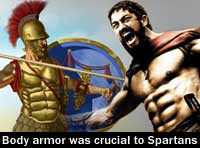
Winkler rightly emphasizes how the ending of the film diverges from most formulaic narratives of imperial Rome that end in the overthrow of a tyrant: FOTRE’s conclusion implies that tyranny and corruption are not inherent in individuals alone, but can be attributed to society as a whole. Winkler’s appreciation proceeds on firmer footing when he discusses FOTRE’s strengths on their own terms, especially the film’s sensitive treatment of Marcus Aurelius.

As an ardent admirer of Scott’s film, I am unconvinced by many of Winkler’s criticisms (e.g., “ Gladiator deals with Roman history mainly as blood sport,”) yet a defensive posture may be unavoidable when evaluating FOTRE, often considered the box office failure that sounded the death knell for the genre. The critical appreciation (chapter one) offered by Martin Winkler demonstrates the scholar’s genuine admiration for Mann’s film and polemically builds a case for the virtues of FOTRE based on its relationship to Ridley Scott’s Gladiator, a loose remake of the 1964 film in so far as both treat the matter of Commodus’ accession after the death of Marcus Aurelius. In what follows I outline the arguments offered by each contributor, saving for my concluding remarks a few issues that I (as a neophyte teacher of an undergraduate course on classics in the cinema) thought could use further consideration. On both counts, the volume is largely successful. Not to be discouraged, I decided to approach the volume, a companion piece to similar collections on Spartacus (2007) and Gladiator (2004), not only as an exploration of this particular film, but also as an overview of the questions and methods that scholars are using to address depictions of the ancient world in cinema. I had omitted the film from my “Classics in the Cinema” (Spring 2010) syllabus, including only an excerpt of it for students to watch in conjunction with the film’s more popular successor, Gladiator.

I requested this book for review under the impression that it offered various perspectives on how Roman decline was represented in a range of so-called “toga films,” and was somewhat surprised to find that the entire volume is dedicated to exploring the historicity and artistic value of Anthony Mann’s 1964 film, The Fall of the Roman Empire (hereafter FOTRE).


 0 kommentar(er)
0 kommentar(er)
